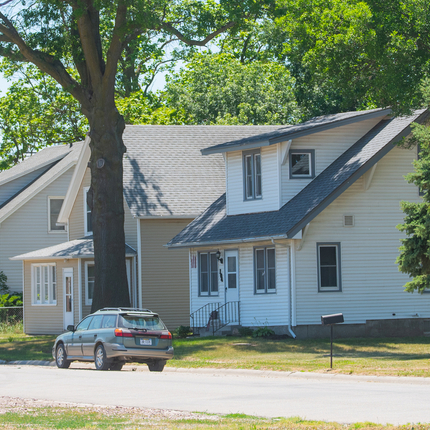Communities in every corner of the country now struggle with a lack of affordable homes, an ailment long associated with fast-growing urban areas.
I used to think that if the market would take care of any problem facing rural communities, it would take care of housing. If we could get jobs, education, and health care right, new homes would sprout like morel mushrooms in the spring. That was a naive view.
A lack of affordable housing hamstrings rural towns’ ability to attract workers and slows business growth. Quality housing is also linked to health and well being, and home ownership remains a primary way working people build equity and ownership.
Small towns need affordable, quality housing for people across the financial spectrum. Solving this shortage will require multifaceted solutions, community involvement, and state and federal policy.
Building and improving housing takes money. Ultimately, we need public investment to make it happen at a meaningful scale.
For its part, the Center for Rural Affairs added single-family mortgage lending to our programs in 2021. We now make home ownership, rehab, and repair loans up to $100,000 in rural Nebraska.
Home prices continue to rise even in rural communities that historically benefited from lower housing costs. You used to be able to easily find a modest older home in the rolling hills and plains of the Midwest for under $100,000. Today, that’s becoming a rarity.
Meanwhile, wage stagnation and inflation have pushed dreams of homeownership further out of reach for many.
Nearly half of Nebraska’s homes predate the Nixon presidency. In the village of Stuart, 68% of homes were built before 1970, according to a recent report from the Flatwater Free Press. Many small towns grapple with similar statistics.
Rural America has been slow to build new houses for various reasons, including lack of contractors, high cost of importing materials, slim profit margins, low population growth, and poor economies of scale.
Our aging housing stock is now a challenge and an opportunity. Old homes tend to be more affordable to purchase but often come with a backlog of maintenance issues.
Recognizing the complex challenge, several Midwestern states made significant investments in workforce housing during their recent legislative sessions. Housing investment is also a priority for the Biden administration, though legislative progress has stalled.
Ensuring affordable and quality housing for everyone who calls our communities home is a critical development strategy in small towns. As we move forward, the Center will continue to increase our focus on this cornerstone of community health and well being.





